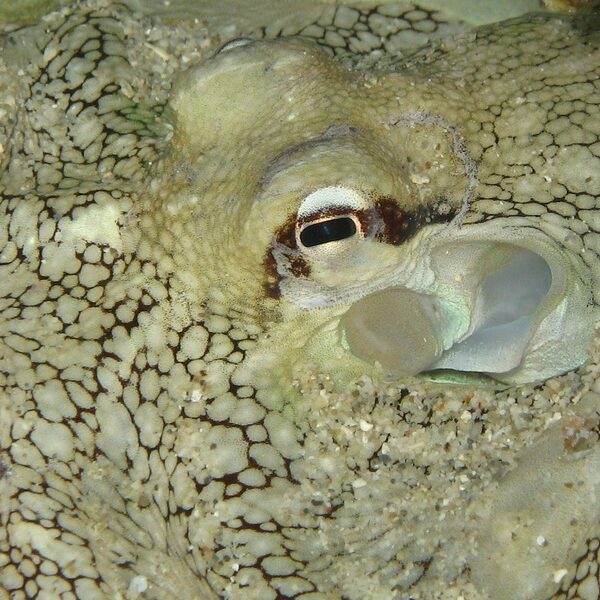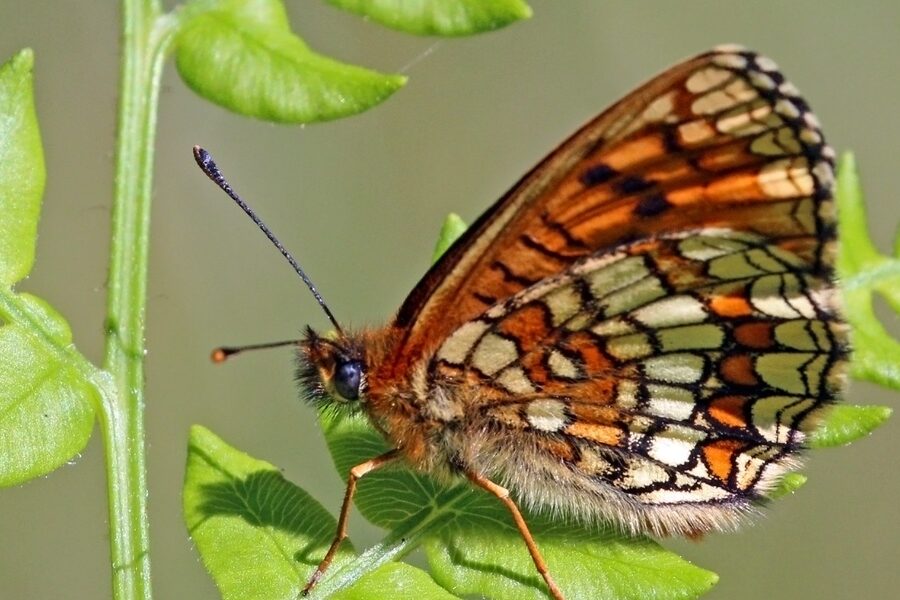Dominica’s islands hold a surprising mix of habitats—from misty montane forests to offshore reefs—that support a wide variety of wildlife. Whether you’re walking a trail or watching seabirds from the shore, the island’s fauna tells a story of island biogeography and conservation.
There are 34 Animals of Dominica, ranging from the Antillean crested hummingbird to the White-tailed tropicbird. For each species, you’ll find below the Scientific name,Where found,Conservation status.
Which species are unique to Dominica?
A few species on the list are endemic or nearly so—most famously the Sisserou (Imperial Amazon) parrot—while others are shared with nearby islands. Check the “Where found” column in the table below to see which are island-only and which have broader Caribbean ranges.
How can I use the conservation information in the list?
Use the Conservation status column to spot species at risk and prioritize observation or support; if a species is listed as threatened or endangered, consider volunteering with local conservation groups, following park guidelines, and reporting sightings to help monitoring efforts.
Animals of Dominica
| Name | Scientific name | Where found | Conservation status |
|---|---|---|---|
| Imperial Amazon (Sisserou) | Amazona imperialis | Morne Diablotin and Morne Trois Pitons national parks, highland rainforest | Critically Endangered (IUCN) |
| Red-necked Amazon (Jaco) | Amazona arausiaca | Morne Diablotin, Morne Trois Pitons slopes and mid-elevation forests | Vulnerable (IUCN) |
| Mountain chicken frog | Leptodactylus fallax | Forest streams, moist valleys and cave entrances in interior forests | Critically Endangered (IUCN) |
| Antillean crested hummingbird | Orthorhyncus cristatus | Gardens, forest edges, Morne Trois Pitons, lowland and mid-elevation areas | Least Concern (IUCN) |
| Brown pelican | Pelecanus occidentalis | Coastal shores, harbors, Scotts Head Marine Reserve, Roseau coastline | Least Concern (IUCN) |
| Magnificent frigatebird | Fregata magnificens | Offshore islets, coastal roosts, Portsmouth and northern coasts | Least Concern (IUCN) |
| White-tailed tropicbird | Phaethon lepturus | Sea cliffs, offshore islets and coastal waters around Dominica | Least Concern (IUCN) |
| Brown booby | Sula leucogaster | Nearshore waters, rocky outcrops and offshore islets around Dominica | Least Concern (IUCN) |
| Sooty tern | Onychoprion fuscatus | Pelagic waters and occasional roosts on offshore islets | Least Concern (IUCN) |
| Brown noddy | Anous stolidus | Coastal rookeries, offshore rocks and sea cliffs | Least Concern (IUCN) |
| Humpback whale | Megaptera novaeangliae | Offshore migration routes; best seen from boat trips in winter months | Least Concern (IUCN) |
| Sperm whale | Physeter macrocephalus | Deep offshore waters around Dominica | Vulnerable (IUCN) |
| Bottlenose dolphin | Tursiops truncatus | Coastal waters, bays and around Scotts Head Marine Reserve | Least Concern (IUCN) |
| Spinner dolphin | Stenella longirostris | Open and coastal waters around Dominica, seen offshore | Least Concern (IUCN) |
| Green turtle | Chelonia mydas | Sandy nesting beaches (southern and eastern coasts), foraging reefs | Endangered (IUCN) |
| Hawksbill turtle | Eretmochelys imbricata | Coral reefs, rocky coasts, nesting on secluded beaches | Critically Endangered (IUCN) |
| Leatherback turtle | Dermochelys coriacea | Nesting on remote beaches, passage along offshore waters | Vulnerable (IUCN) |
| Queen conch | Lobatus gigas | Shallow seagrass beds and sandy bottoms off the coast | Vulnerable (IUCN) |
| Caribbean spiny lobster | Panulirus argus | Reef crevices, rocky bottoms and shallow coastal waters | Variable local status (IUCN: Data Deficient) |
| Stoplight parrotfish | Sparisoma viride | Coral reefs and rocky reefs around Scotts Head and coastal marine parks | Least Concern (IUCN) |
| Nurse shark | Ginglymostoma cirratum | Shallow reefs, sandy bottoms and coastal bays | Vulnerable (IUCN) |
| Caribbean reef shark | Carcharhinus perezi | Offshore reefs and deeper coastal waters | Near Threatened (IUCN) |
| Land hermit crab | Coenobita clypeatus | Coastal forests, sand dunes, gardens and beach edges | Least Concern (IUCN) |
| Green iguana | Iguana iguana | Riverbanks, gardens, lowland forest and coastal areas | Least Concern (IUCN) |
| Common house gecko | Hemidactylus mabouia | Villages, buildings, gardens and forest edges across Dominica | Introduced, widespread |
| Red-rumped agouti | Dasyprocta leporina | Forest edges, secondary growth and plantations near Morne Trois Pitons | Least Concern (IUCN) |
| Jamaican fruit bat | Artibeus jamaicensis | Caves, forest canopy, agricultural edges and villages | Least Concern (IUCN) |
| Greater bulldog bat (fishing bat) | Noctilio leporinus | Coastal mangroves, river mouths and sheltered bays | Least Concern (IUCN) |
| Scats (Carangidae family; common jacks) | Carangidae spp. | Nearshore reefs, bays and around Scotts Head Marine Reserve | Varies by species |
| Scorpionfish (lionfish common) | Pterois volitans | Reefs, rocky outcrops and seabed nearshore waters | Invasive, locally common |
| Scalloped hammerhead (occasional) | Sphyrna lewini | Occasional passage in deeper offshore waters around Dominica | Endangered (IUCN) |
| Frigatebird (juvenile and adult visitors) | Fregata magnificens (juveniles included) | Coasts, roosts on offshore islets and mangroves | Least Concern (IUCN) |
| Scotts Head anemonefish (common clownfish) | Amphiprion spp. | Shallow sheltered bays, anemone hosts near Scotts Head Marine Reserve | Varies by species |
| Brown pelican (juvenile) | Pelecanus occidentalis (juvenile) | Harbors, coastal fishing grounds and roosts | Least Concern (IUCN) |
Images and Descriptions

Imperial Amazon (Sisserou)
Dominica’s endemic, iconic green parrot with purple shoulders. Rare and reclusive, best seen on guided hikes in high-elevation rainforest; symbol of national conservation efforts and a must-see for birdwatchers.

Red-necked Amazon (Jaco)
A noisy, colorful parrot found in mid-elevation forests. More numerous than the Sisserou; easily spotted at forest edges near reserves and known nesting valleys around Morne Trois Pitons.
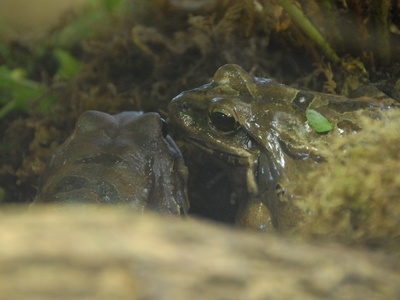
Mountain chicken frog
A large, ground-dwelling frog once common; now rare from chytrid disease. Look for calls and remnants near streams in protected rainforest—one of Dominica’s most famous conservation stories.
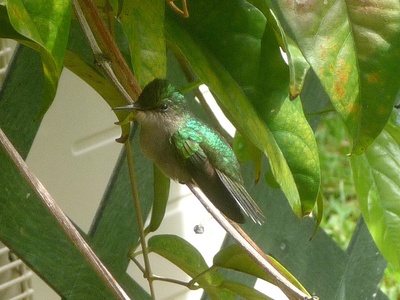
Antillean crested hummingbird
A tiny, feisty hummingbird with a distinctive crest. Common at flowering shrubs, roadside feeders and gardens across the island—easy to spot near trails and village gardens.

Brown pelican
Large, coastal seabird that nests on offshore rocks and fishes inshore. Often seen diving or loafing around harbors and rocky points—great for coastal birdwatching and boat trips.

Magnificent frigatebird
A spectacular, fork-tailed seabird with a male’s red throat pouch. Soars over coastal waters and picks food from the surface—common around islands and open bays.

White-tailed tropicbird
Elegant white seabird with long tail streamers, often seen alone or in pairs. Frequently seen flying along coasts and diving for fish near offshore rocks and sea cliffs.
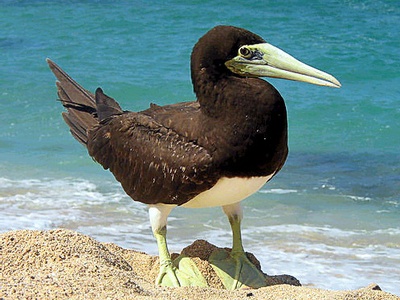
Brown booby
A powerful diving seabird that plunges for fish. Seen from boats and headlands; common offshore and around nesting sites on isolated rocks.

Sooty tern
A black-and-white seabird of open ocean waters. Often seen in large feeding flocks far from shore; boat trips during migration are the best chance to observe them.

Brown noddy
A dark tern-like seabird that nests on cliffs and islets. Often found near fishing boats and coastal colonies; common in sheltered bays around Dominica.

Humpback whale
Seasonal visitors to Dominican waters during breeding and migration. Humpbacks offer dramatic breeches and tail slaps—watch from whale-watching boats between late winter and spring.
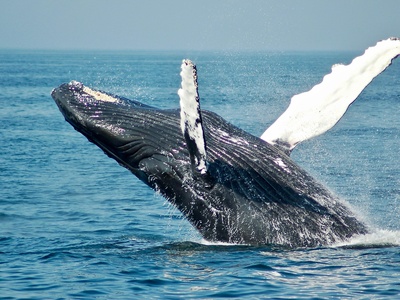
Sperm whale
Deep-diving leviathans that occasionally pass Dominica’s deep waters. Best seen on dedicated marine mammal surveys; notable for large heads and powerful diving behavior.

Bottlenose dolphin
Familiar and sociable dolphins seen from boats and shore. Often ride bow waves near coastlines and are commonly encountered on local boat trips for snorkeling and dolphin watching.
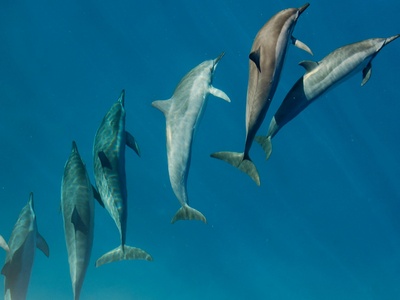
Spinner dolphin
Slender, acrobatic dolphins that spin when breaching. Frequently spotted in groups offshore—common on pelagic trips and early-morning boat excursions.

Green turtle
Large herbivorous sea turtle that nests on certain Dominican beaches and feeds on reefs. Night beach patrols and nesting reports highlight its conservation importance.
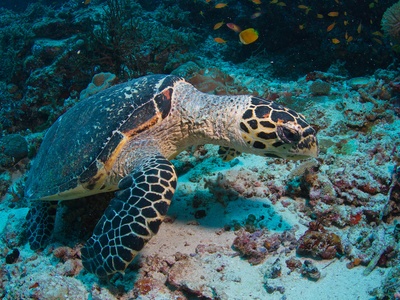
Hawksbill turtle
A small, sharp-beaked turtle that feeds on sponges and nests on select beaches. Highly threatened; snorkeling reefs and conservation patrols occasionally reveal nesting activity.
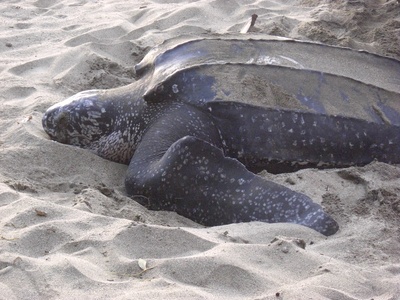
Leatherback turtle
Dominica is an important nesting site for enormous leatherbacks. These deep-diving, gelatinous-prey specialists come ashore at night to nest; a conservation priority and nocturnal spectacle.

Queen conch
Large edible sea snail found in seagrass and sand. Once common, now less abundant—regulated fisheries and conservation efforts protect remaining populations around Dominica.
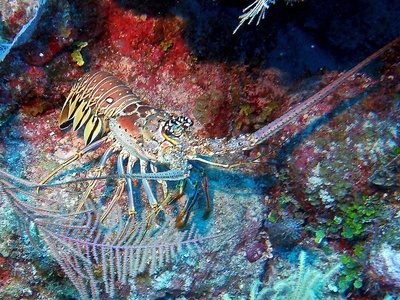
Caribbean spiny lobster
A prized reef crustacean living in holes and ledges. Night dives and fishers report them often; important for local fisheries and culinary tradition.

Stoplight parrotfish
A colorful, algae-eating reef fish that scrapes coral and produces sand. Common on reefs near dive sites; a visible part of healthy reef communities.
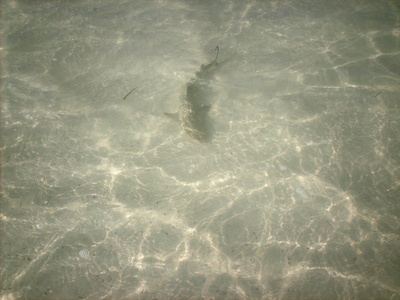
Nurse shark
A slow-moving nocturnal shark often seen resting under ledges. Frequently encountered on dives and snorkel trips in sheltered bays around Dominica.
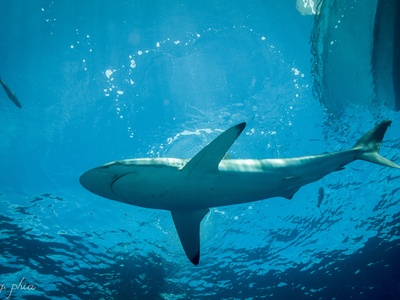
Caribbean reef shark
A medium-sized reef shark occasionally encountered by divers. Present around deeper reef edges and offshore drop-offs; usually wary of people.

Land hermit crab
Large terrestrial hermit crab that scavenges along beaches and shore vegetation. Common and conspicuous at night or after rain, often seen near coastal settlements.
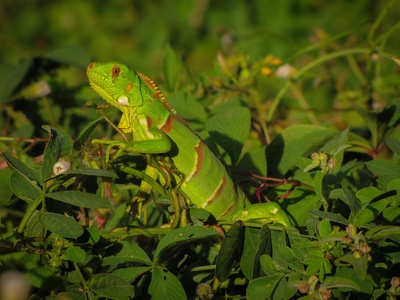
Green iguana
Large arboreal lizard often basking on branches and walls. Widespread and adaptable, sometimes considered invasive where it displaces native reptiles.
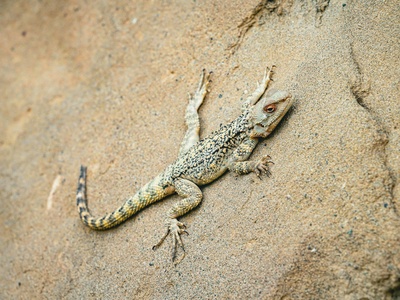
Common house gecko
Small nocturnal gecko that thrives in human habitations. Frequently seen on walls and near lights catching insects; an introduced but well-established presence.

Red-rumped agouti
A medium-sized rodent that forages for fruits and seeds. Skittish and terrestrial, more often heard than seen; encountered in forest clearings and near farms.

Jamaican fruit bat
A common fruit-eating bat that forages in forest canopy and gardens. Important seed dispersers and frequently seen emerging at dusk from roosts.

Greater bulldog bat (fishing bat)
A specialist that plucks fish from the water using long hind feet. Often seen at dusk over calm bays and river mouths; an impressive night predator.
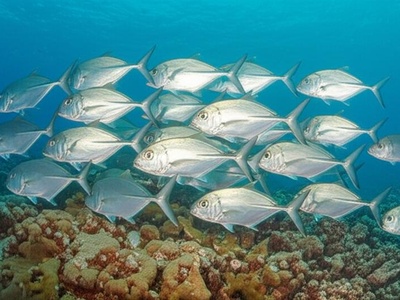
Scats (Carangidae family; common jacks)
Group of fast, schooling predatory fishes common around reefs and beaches. Frequently seen on snorkel and boat trips—important to local fisheries and marine food webs.
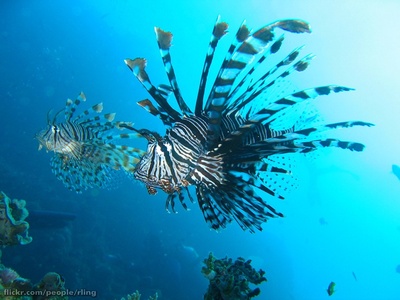
Scorpionfish (lionfish common)
Venomous, strikingly patterned reef fish introduced to the Caribbean. Ambush predator on reefs and a concern for native fish populations; often targeted in removal efforts.

Scalloped hammerhead (occasional)
A large, distinctive hammerhead shark that may migrate through deep waters. Rarely seen but reported by offshore fishermen and deep-water surveys.

Frigatebird (juvenile and adult visitors)
Soaring seabirds that patrol coasts and steal food from other birds. Juveniles and adults frequent sheltered bays—impressive aerial displays are common near shore.

Scotts Head anemonefish (common clownfish)
Small, colorful reef fish living among sea anemones around sheltered coves. Easy to spot on snorkel trips near Scotts Head—popular with divers and snorkelers.

Brown pelican (juvenile)
Young brown pelicans show mottled plumage. Common around ports and fishing boats; juveniles are often seen learning to fish under adult supervision.

